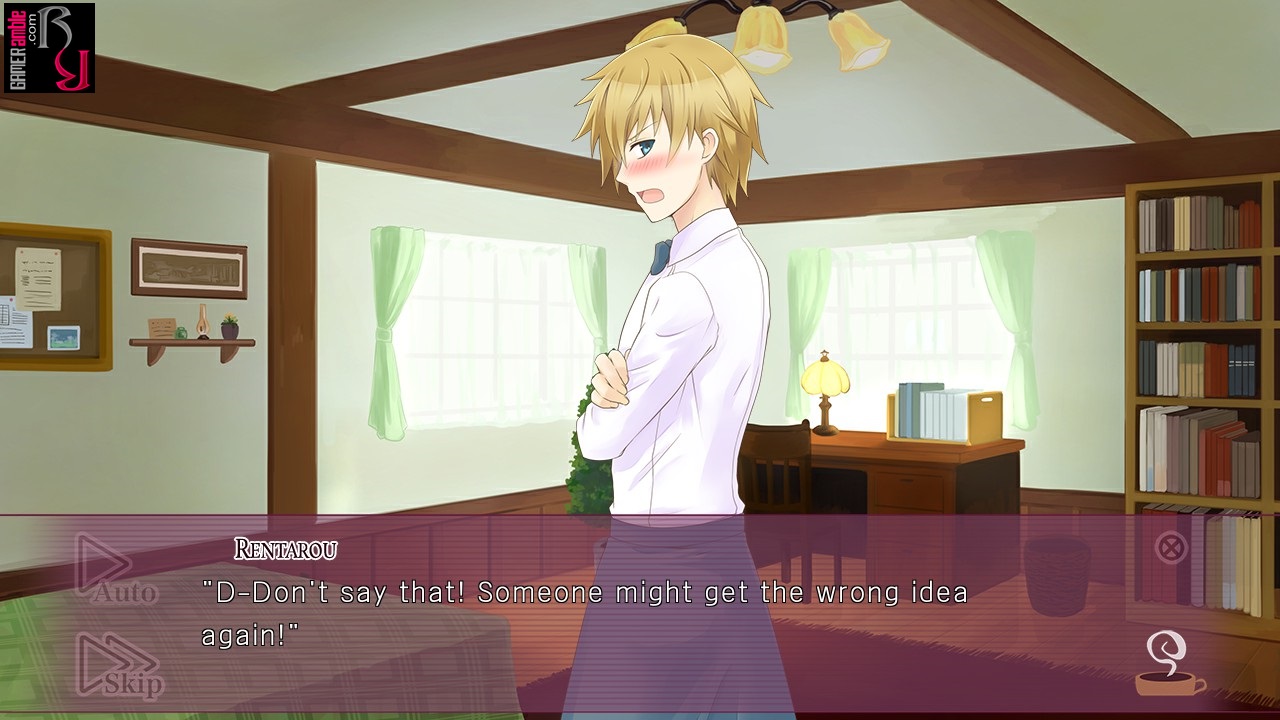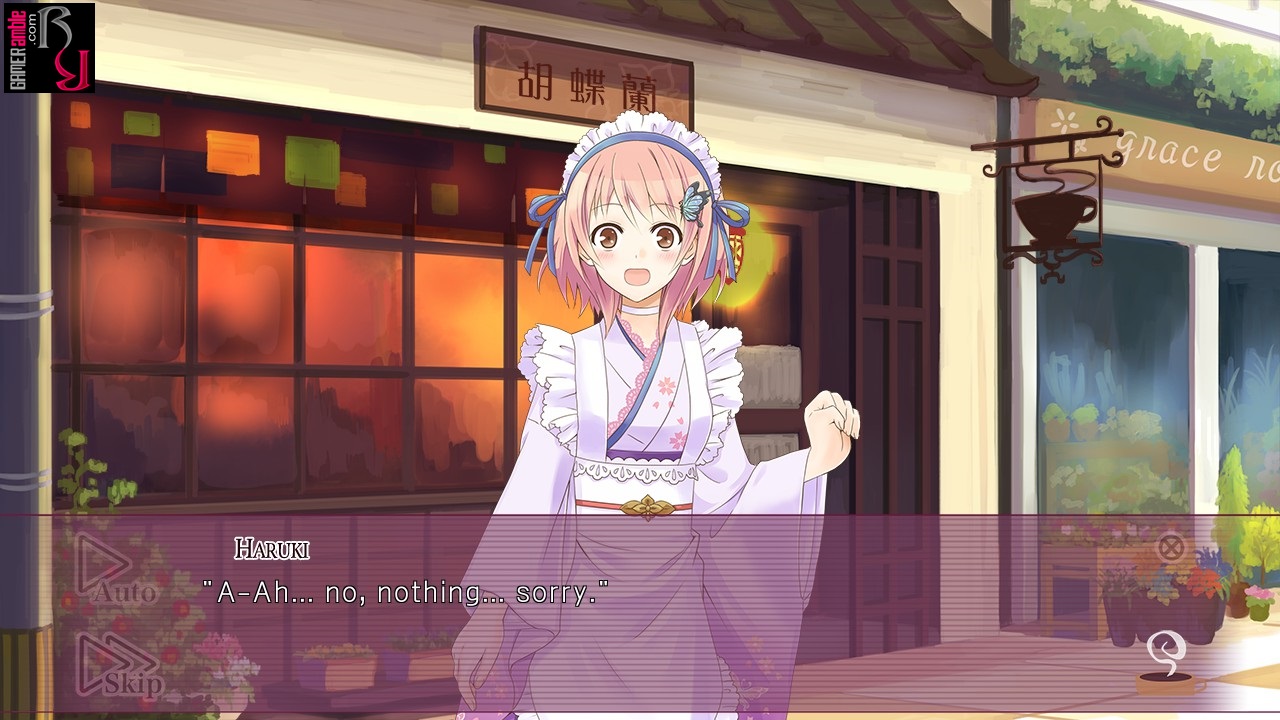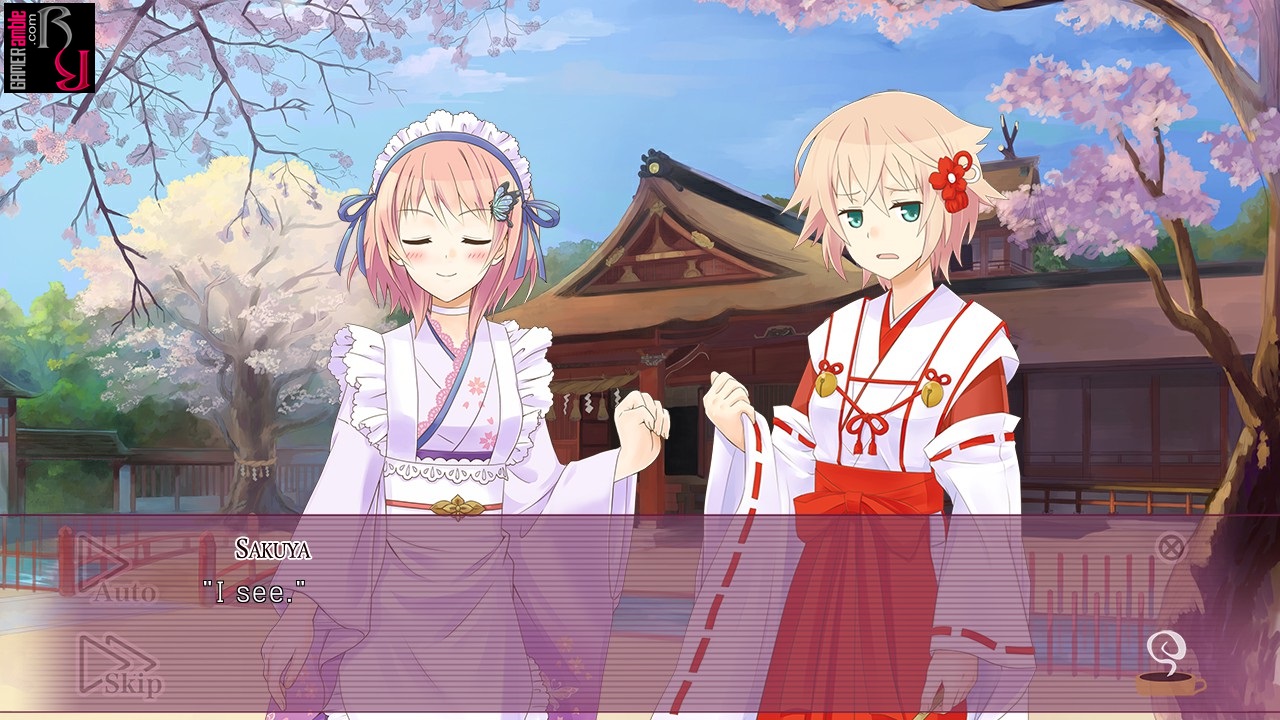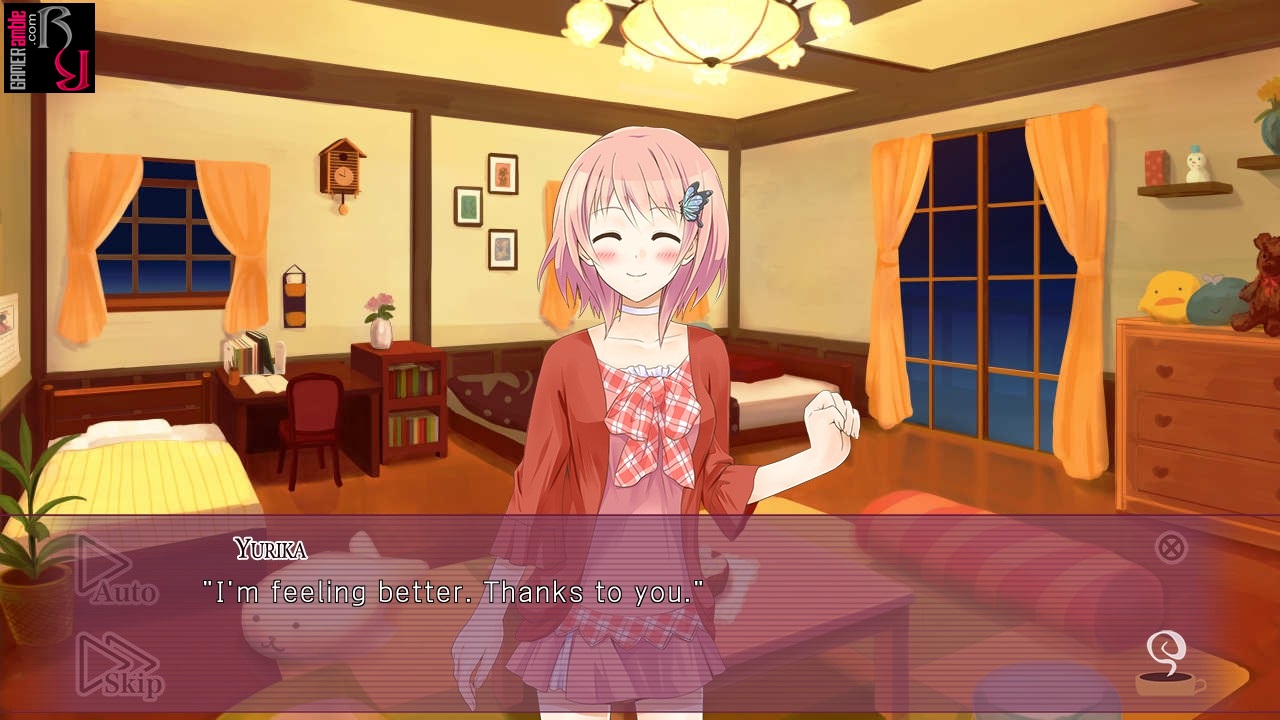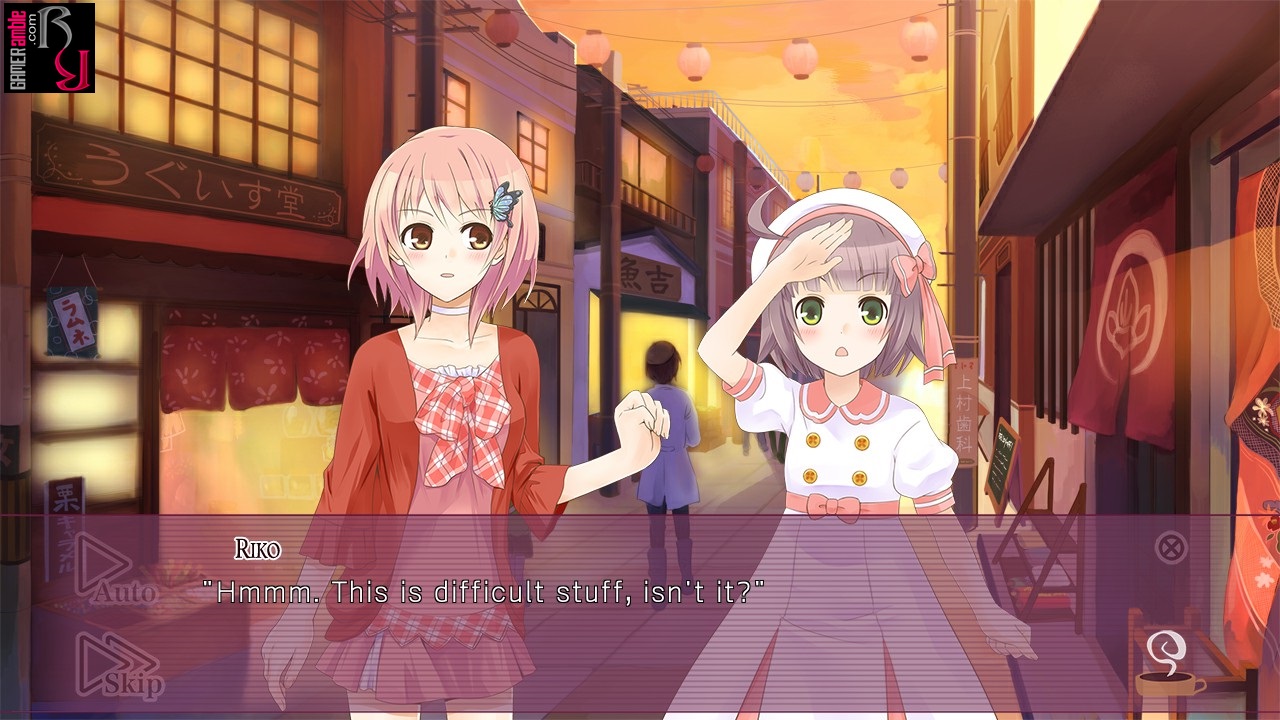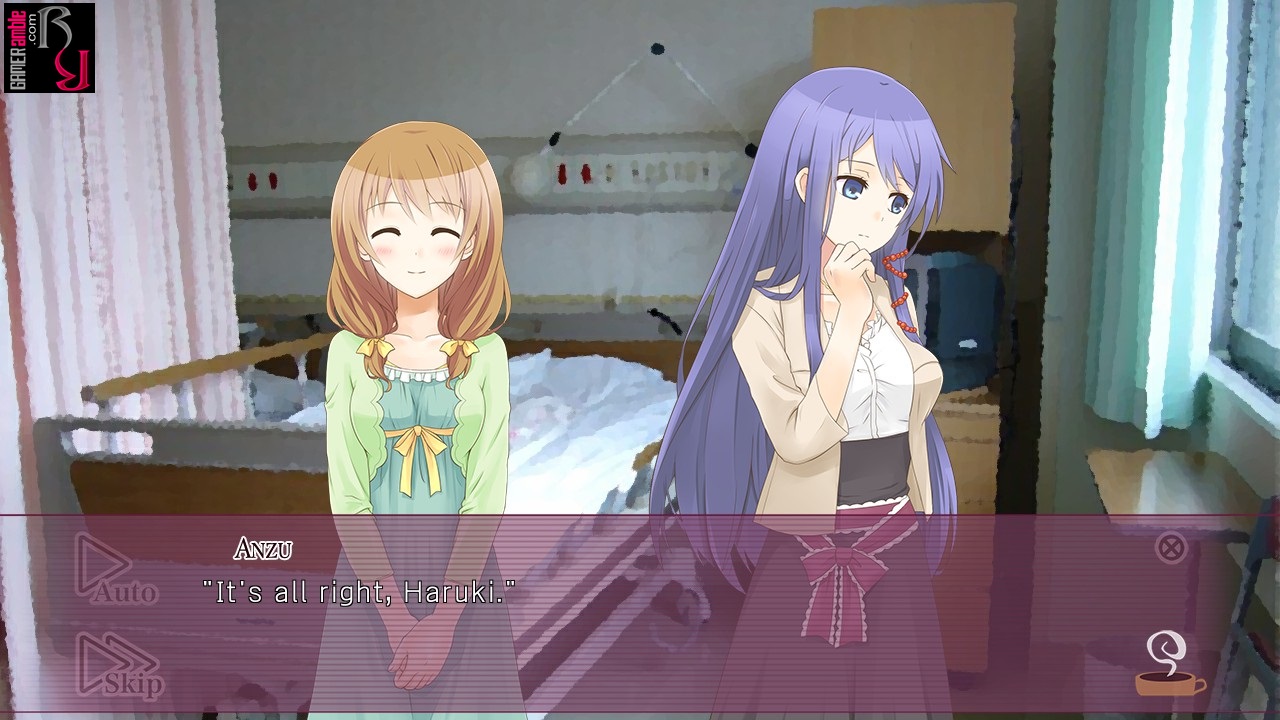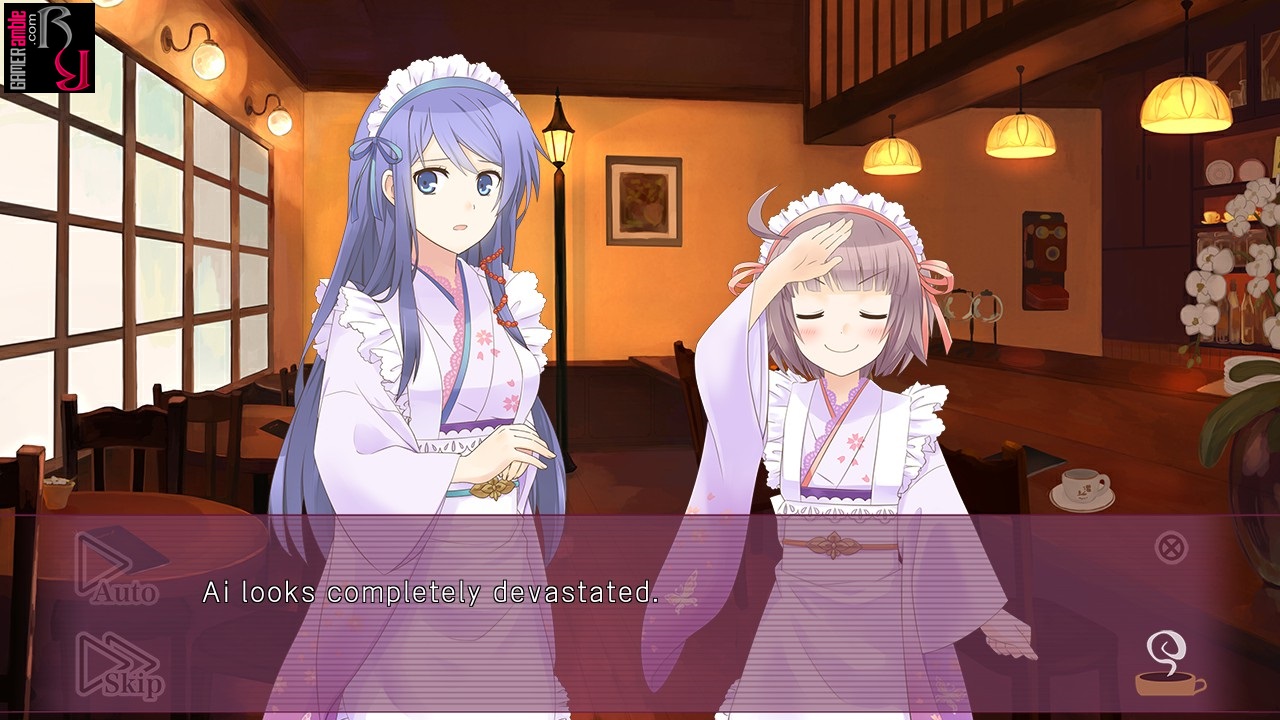A Butterfly in the District of Dreams
Developer: Life a Little | Publisher: Sekai Project | Release Date: 2017 | Genre: Casual / Indie / Visual Novel | Website: Official Website | Purchase: Steam
When we meet Haruki, the protagonist of A Butterfly In The District of Dreams, his life has gotten somewhat off track. Instead of going to college, he spends his days visiting his sister, Anzu, who is confined to a hospital room due to her illness. This continues until his childhood friend, Ai Tsukibane, corners him about this habit and forces him to attend school again. Ai is the opposite of Haruki, as she has always attained top grades, but the two have drifted apart as they grow older. As the two rekindle their friendship, they miss the last train home for the day, but surprisingly enough, another one arrives at the station. Faced with a choice of boarding this mysterious train or walking all the way home, the two take their chances and end up in a strange place called Olive Village. Not only is this village unfamiliar to them, but it seems to be in a different reality than their own.
Taking a strange train to an alternate reality sounds like the plot of a horror movie, but A Butterfly In The District of Dreams is the polar opposite. Haruki and Ai find themselves in a bright, sunny village with a seemingly never-ending street of shops. They also encounter a girl named Yurika, who is the spitting image of Haruki’s sister. Instead of being an evil doppelganger, Yurika offers the duo lodging until they figure out how to get home, provided they work part-time at her cafe. It is in this cafe, Kockhouran, where most of the game takes place as Haruki comes to grips with his predicament. While Ai’s father is the president of a large enterprise, Haruki has very little to entice him back to the real world, apart from his sister. Complicating matters even further is the fact that both Ai and Yurika, along with a girl named Hiroku, whom they meet in the village, appear to have feelings for Hiraki.
ABITDoD was initially released in Japan in 2013, and while it has taken a couple of years, English fans can finally experience the game. While there can never be enough quality visual novels on Steam, there is no doubt that this one won’t appeal to everyone. Anyone looking for fan service will be a little disappointed, and those drawn in by the mysterious-sounding storyline might also feel a little duped. This is because most of the game plays out like a slice-of-life visual novel, which is a little at odds with the unusual circumstances of the protagonist. There is nothing wrong with this, of course, and despite the languid pace, the story is still enjoyable, but it is a little unexpected. In fact, the second half of the game also becomes a lot more lighthearted and features more humor than what the rather somber first half would have you believe.
Apart from a newfound ability to turn seeds into flowers simply by holding them, nothing else really changes for Haruki in this new reality. He quickly settles into life at Kochouran and actually does well at his first part-time job. Things are a little more challenging for Ai as she is not used to cooking and serving, but she doesn’t seem to be in any rush to return home either. The result is a very slow-paced and relaxing visual novel that some players will find interesting, while others might consider it a little boring.
Most of the story in ABITDoD takes place in the coffee shop where the characters work as well as live. The story occasionally strays into the streets and a nearby shrine, but don’t expect any strange or mysterious locations. The story is pretty linear, but you can choose between multiple routes leading to different endings. The routes are all focused around the three main heroines, so anyone interested in seeing the entire story must complete the game multiple times. This isn’t too hard, though, and you can fast-forward through text you’ve already read in a previous playthrough to save some time. While the story didn’t exactly leave us on the edge of our seats, the game’s slow pace and the way characters slowly settle into a routine at the coffee shop make for a relaxing experience. The occasional “crisis” or misunderstanding crops up, but these mainly consist of characters getting sick, getting into trouble, or dealing with personal issues. Some of the stuff is a little questionable, such as one of the male characters slapping a much younger female employee as punishment for theft, but overall nothing too controversial ever happens. The fact that the protagonist can fall in love with a girl who could be the twin of his own sister is also a little sketchy and might raise a few eyebrows, though.
For a game that is a few years old already, ABITDoD looks very decent. Initially, the backgrounds are all filtered photographs, but as soon as the story shifts to Olive Village, they are replaced by actual artwork. These look much nicer, but the number of backgrounds is still somewhat limited. The sprites fare much better with some nice 2D character designs for the entire cast. There are no animations, of course, but the characters are detailed and easy on the eyes. We are particularly fond of the audio as the game features full Japanese voice acting for the entire cast, apart from Haruki. The 18 tracks that make up the soundtrack are all also very good, with some standout tracks like “Flower,” “Apricot,” “Olive,” and “A Straight Detour.” Our favorite is the very catchy “Back Alley Waltz.”
Overall, we enjoyed our time with A Butterfly In The District of Dreams enough to complete it multiple times, but as we mentioned before, it is a relatively niche title. The story does pick up towards the end, and once you get to know the characters, it is easy to get caught up in their stories, but the slow pace will definitely deter some players. The multiple routes and endings add a lot of replay value to this title, which makes up for the fact that it is not as flashy or fast-paced as other visual novels. Players who can appreciate good slice-of-life stories and have the perseverance to stick with it through the slower parts will find a charming title with endearing characters.
System Requirements
- OS: Windows XP
- Processor: 1.7 Ghz Intel or AMD Processor
- Memory: 512 MB RAM
- Graphics: OpenGL or DirectX Compatible Graphics Card
- DirectX: Version 9.0c
- Storage: 500 MB available space




